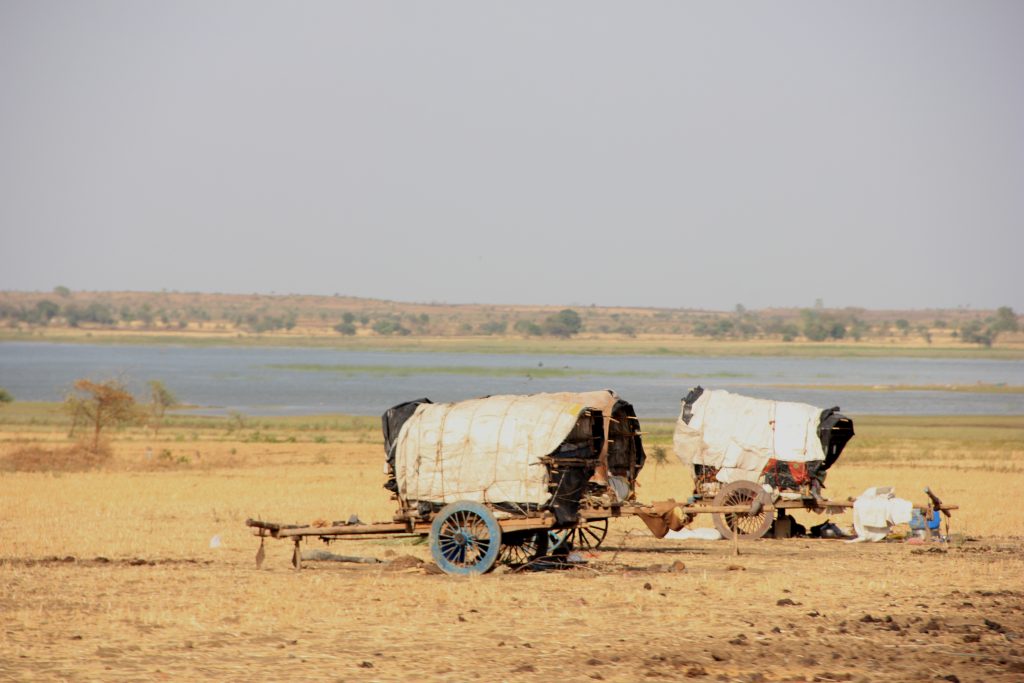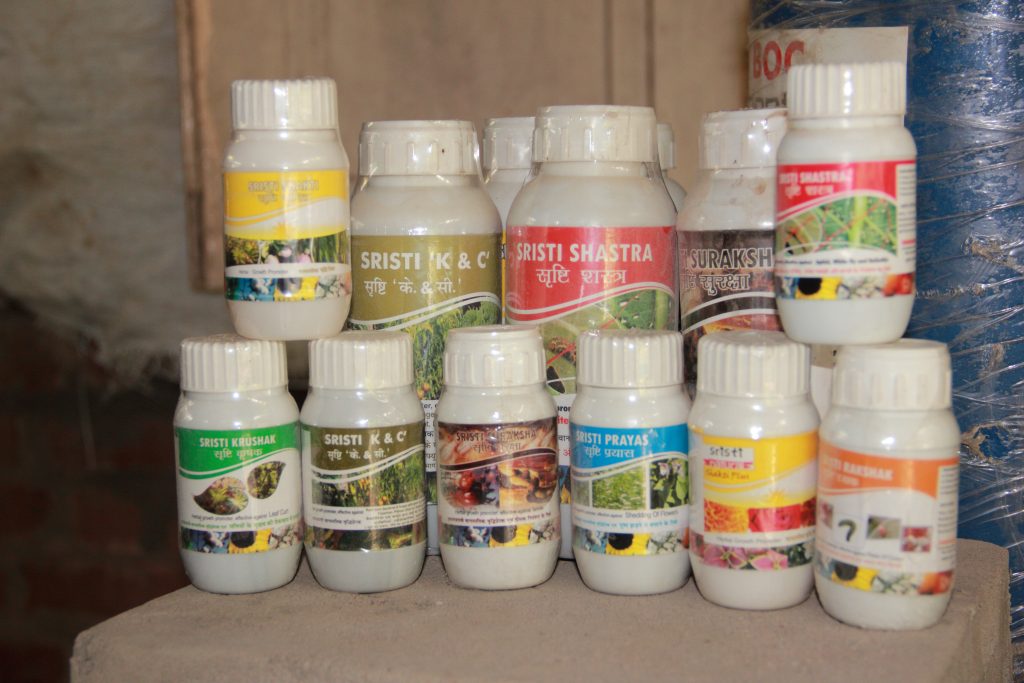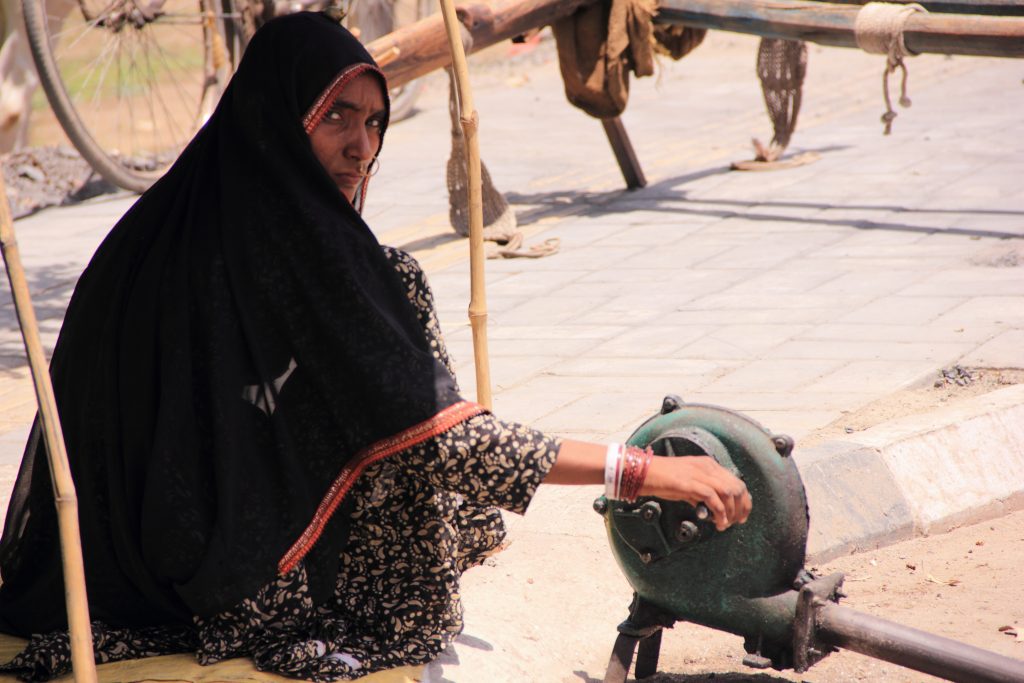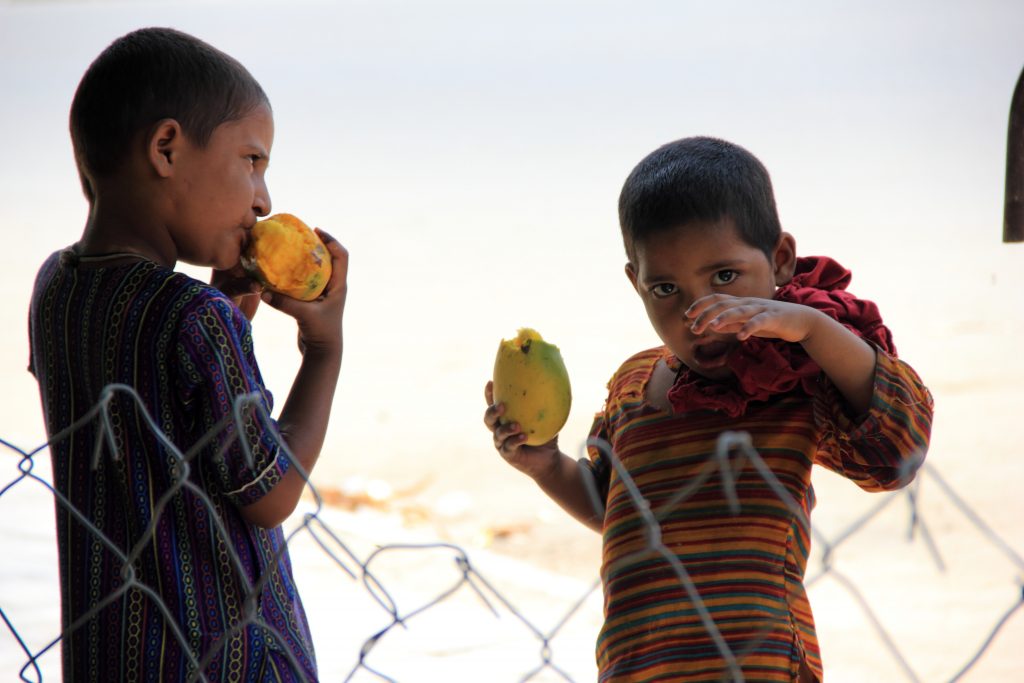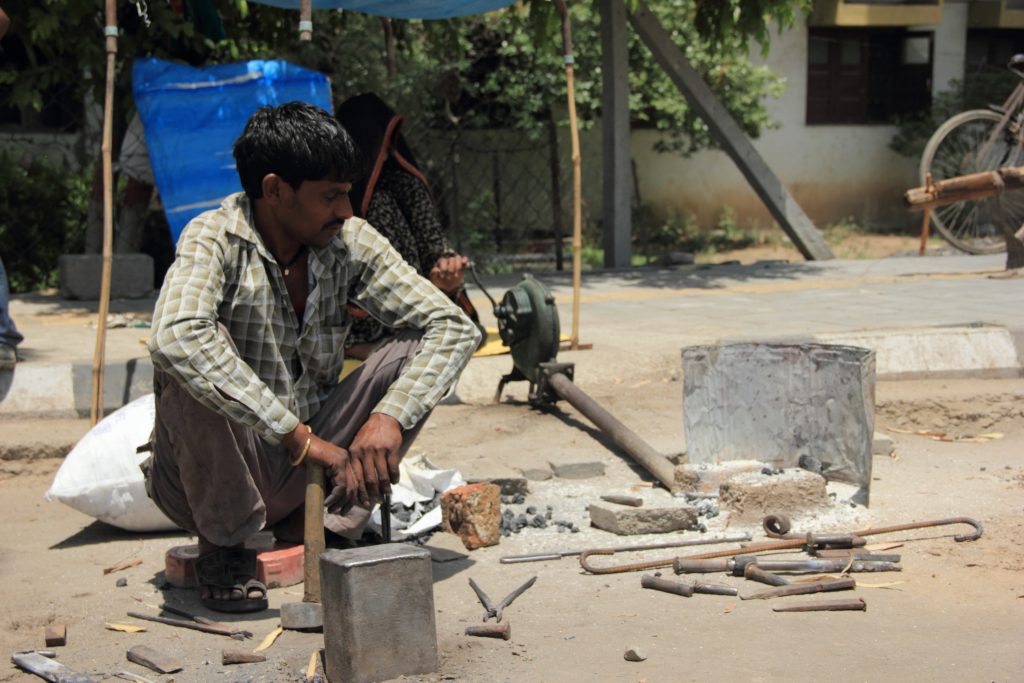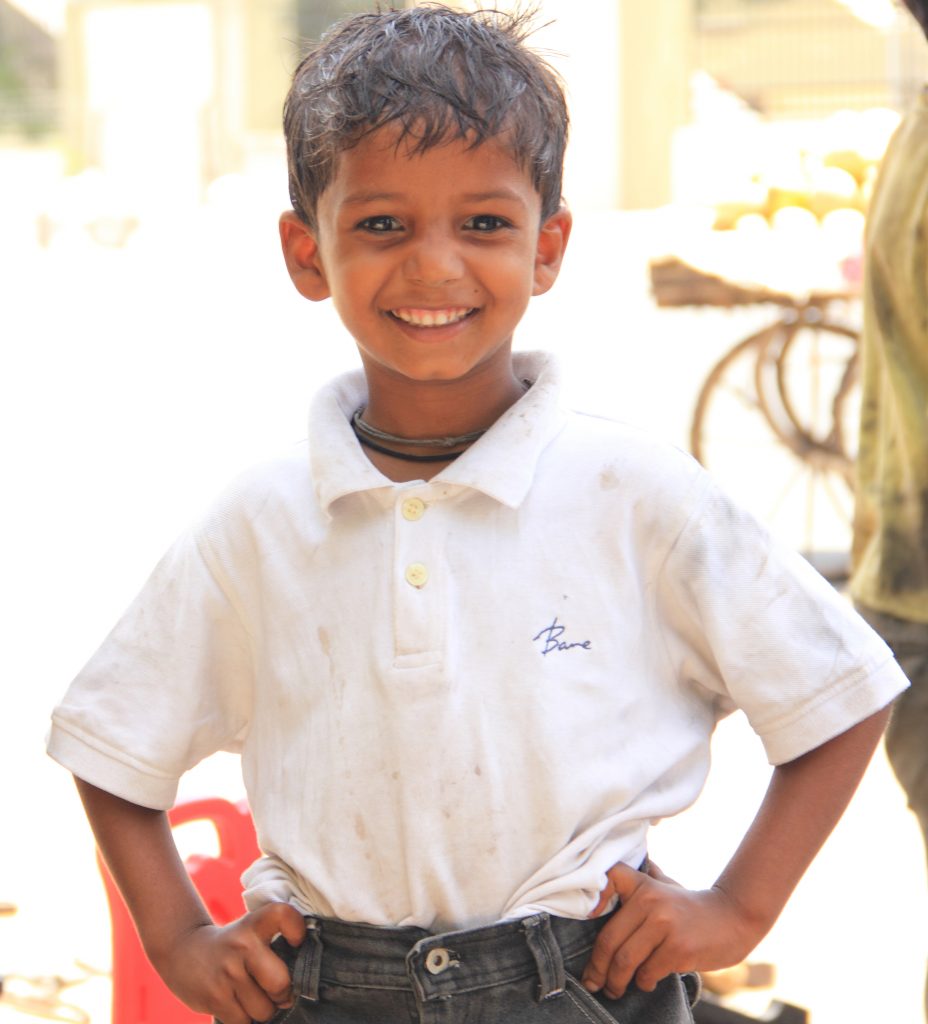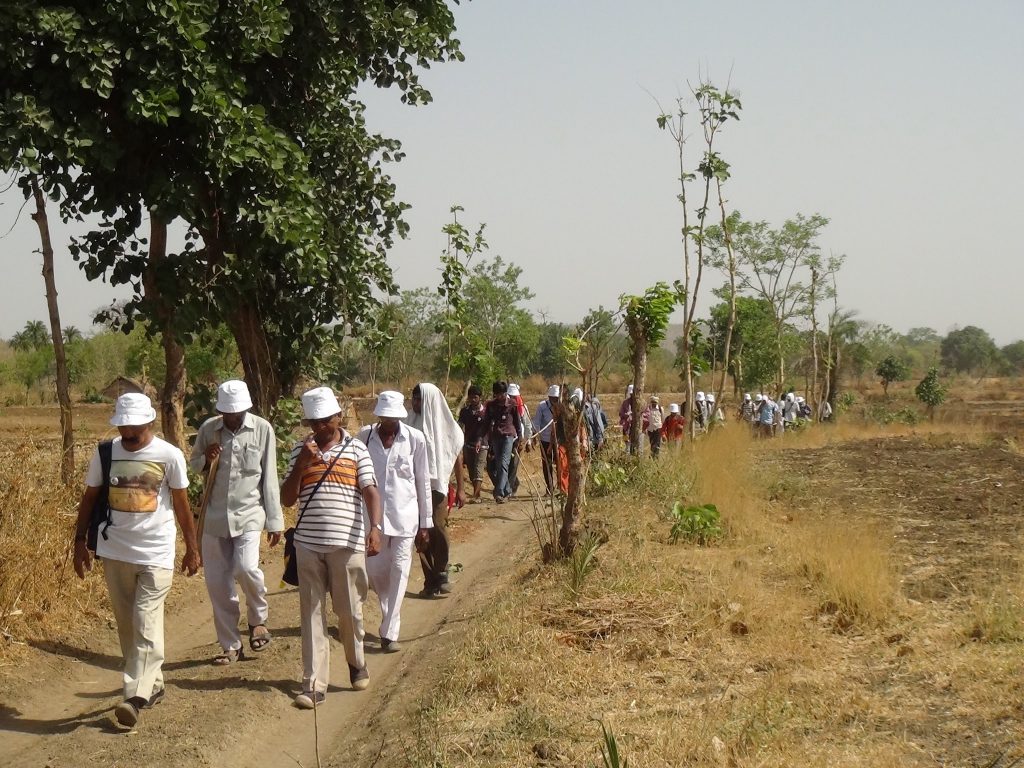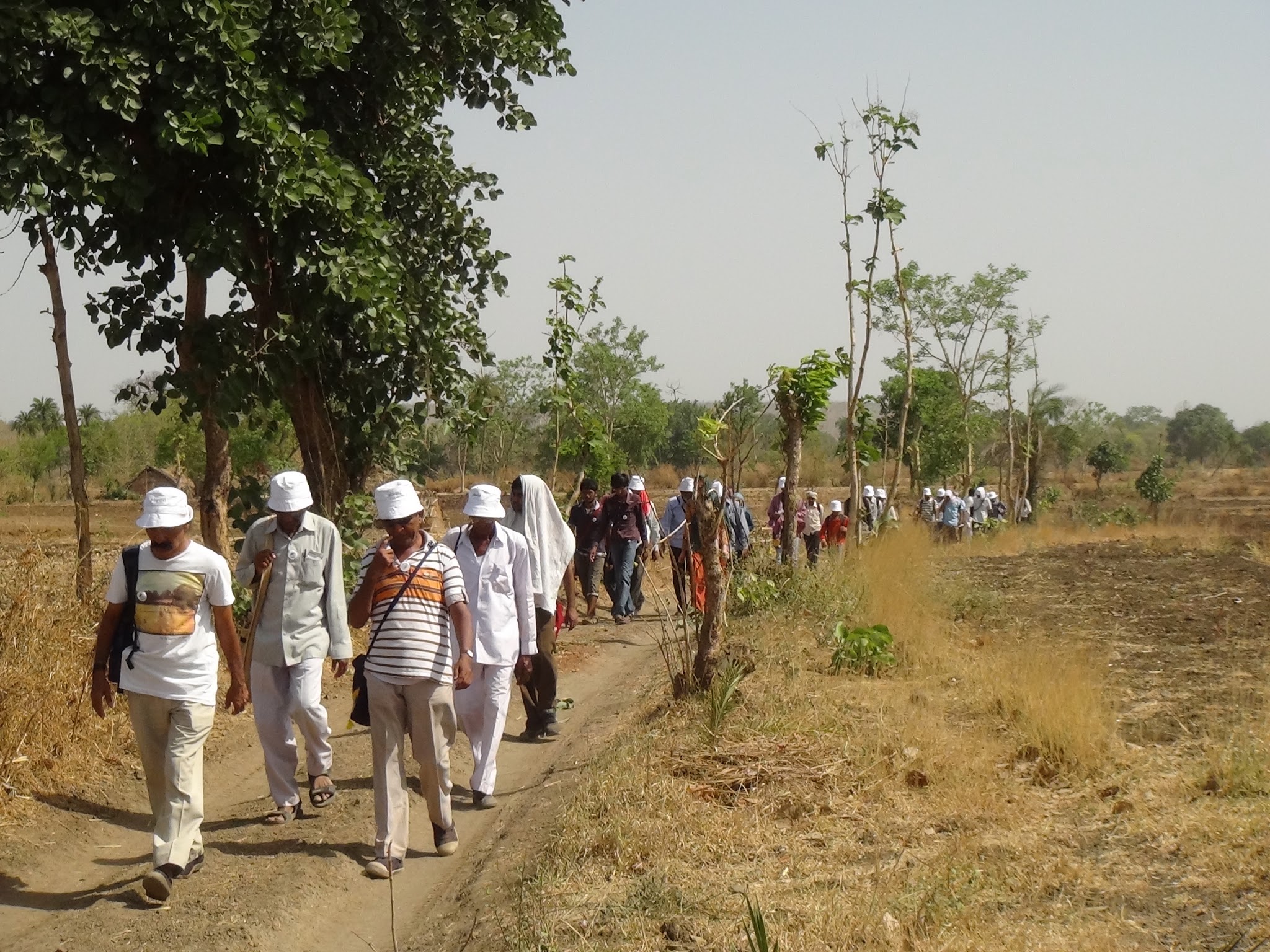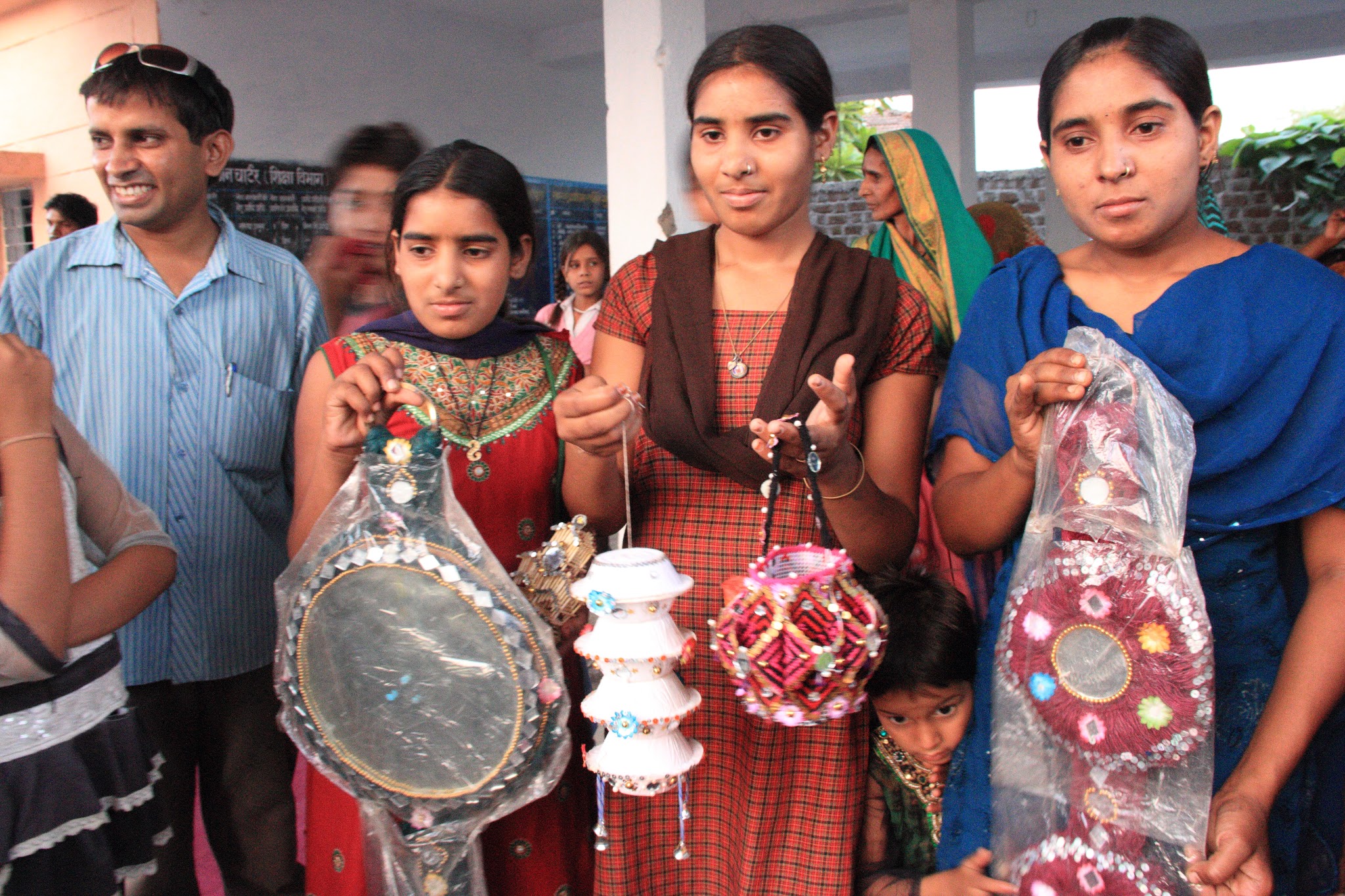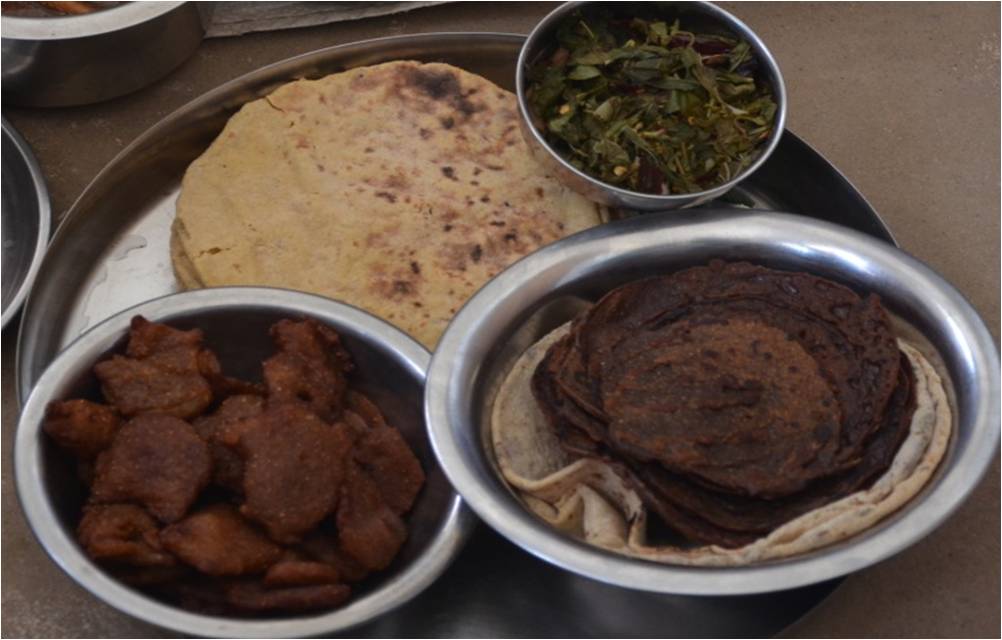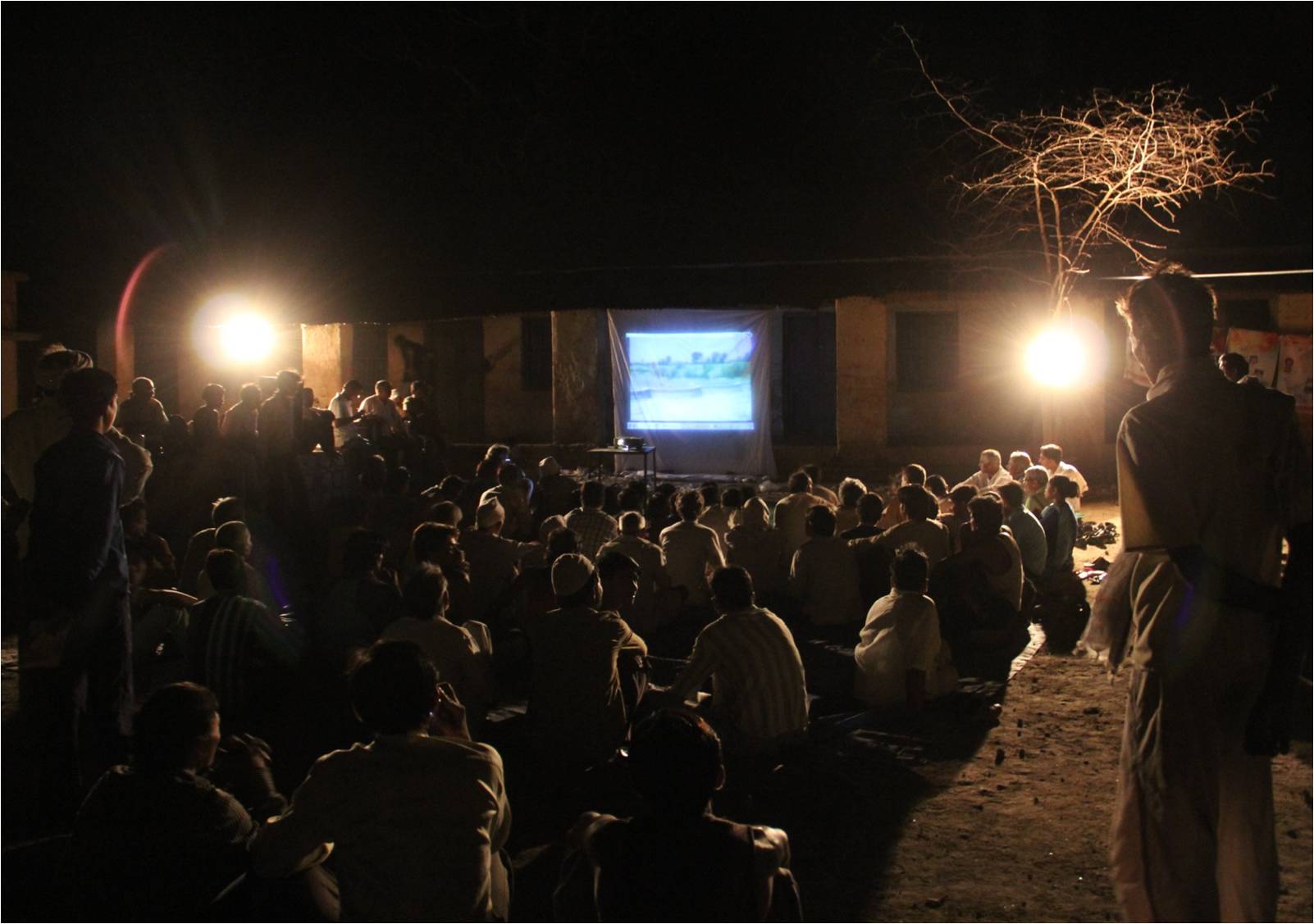Get Next Shodhyatra Update:
Phone:
079-27913293, 27912792
Email:
shodhyatra@sristi.org
29TH SHODHYATRA (JAMONIA DAM - TALAB, SEHORE DISTRICT, MADHYA PRADESH)
23 May to 30 May, 2012
SOYA BEANS WILL SHATTER NO MORE
Rarely have we come across colours used as abundantly on walls, courtyards and huts as we witnessed during the the Sehore shodhyatra. The parched earth in summer conveys the toughness that local communities face everyday. In the absence of much rain, uncertain and deep ground water conditions, coming across large fallow stretches of land is not uncommon.
Conventionally, cotton, soya bean and other pulse-growing regions have registered very slow change in economic opportunities. A distance of only 70 km from the capital did not seem to make much of a difference in terms of the opportunities available locally. The contrast in living conditions was very evident. The tribal communities in the region continue to struggle because of harsh agro-climatic conditions and lack of economic change.
The shodhyatris met at the farm of Rajkumar Rathod, a recipient of the National Award from NIF for developing a highly productive variety of pigeon pea viz., Richa. Interactions with local communities charged the shodhyatris as they learnt about the cultural richness of the region.
While passing through the town, we met a few mechanics viz., Israel, Imran and Iqbal. They had developed different farm implements such as a three tyne tiller, a shallow sowing tiller and a weeder for different crops.
It was not long, before we noticed how a young girl was removing grass on the sides of a field. There was quite a distance between the grass strip and the field. Unable to understand the logic, we asked her what was the reason behind this. She explained that if the grass was not removed, it would easily encroach onto the field during the monsoon. It would become very difficult to remove it later on.
After a few kilometres, we saw a tractor ploughing some hard black clay soil. After going close to the tractor, we asked whether the tyre tends to slip due to the hardness of soil. The driver didn’t face that problem because he had filled the tyres with water instead of air. It cost only Rs. 200 for filling water into two tyres and it lasted for about a fortnight. Local businesses were very unhappy with this innovation because earlier they used to sell weights wort about Rs. 8000. We tried to find the person who started this practice and found that the pioneer of this technology was Ghanshyam. Rajkumar explained to the villagers how he had developed the Richa variety. One day, he noticed an odd plant among the whole field. By re-growing and selecting the good plants, he ended up developing the Richa variety.
Dharamvir Kamboj, an innovator from Haryana, demonstrated his multipurpose food processing machine. Having begun his life as a rickshaw driver, he had come a long way to set up his own enterprise and make a difference to dozens of communities. Amrutbhai showed a modified pulley which prevented the bucket from falling deep inside the well. Several other innovations were shown in Jahangirpura. Competitions on biodiversity and new ideas were also organised.
The next stop was in Nayapura village. In a meeting on the roadside, several children sat with us on a durry spread on the ground. The children were shown a burning matchstick and asked what they would do once the lamp had been lit. Everybody said that they would throw it away. They were then challenged to redesign the matchstick for it to last longer. A little girl, Sandhya did not take even one minute to come up with a suggestion to put the inflammable powder on both sides of the stick. Ajay and Jitendr a from Prachor village had thought of a quick dry liquid in which a stick could be dipped many times. There was no doubt that Sandhya was an extremely brilliant girl. The answer to the same question in a class of postgraduate students at IIMA sometimes takes a minute or two before someone will hazard a guess. In the present case, she did not even take a minute. The villagers were told about the brilliance of the children and requested to let SRISTI know if their educational journey ever meets with a roadblock.
The shodhyatris spent a night in Dhaboti village. Ishwar Singh had been filling water into tractor tyres for the last three years. The normal lifespan of a tyre filled with air is about 500 hours. Apparently, the life of tyres increased to 700-800 hours when filled with water.
After felicitating several herbal healers Kaluram, Jagatnath and Lokamal, the yatris discussed among themselves, the vibrancy of the knowledge system. The winners of the recipe competition were honoured. The blessings of Muralibhai, a centenarian, exhilirated every yatri. On the way to Mogra, the yatris stopped at Kundi village. A local healer, Ram Prasad Hallalal Thakur, surprised everybody when he mentioned that he brought some herbs from Punjab for treating people. Pannalal, Bhawar Singh, and Jagannath Suryavanshi were other healers who shared their knowledge generously.
Among the recipes, kolar [Bauhinia variegata Linn.] vegetable was said to be good for the eye. The vegetable of puaar [Cassia tora Linn.] was supposed to alleviate joint pains and its seeds were reportedly helpful in curing eczema. Among the experiments that farmers had done, an interesting one was narrated by Abdul Jaleel who had used a calotropis-based herbal formulation for controlling worms. Even for treating worms in the stomach two and a half leaves of this plant were given with bread to affected people.
The yatris were amazed by the variety of preparations of mahua [Madhuca longifolia (Koenig) J.F. Macbr.] brought in by the ladies in Bicholi. The most remarkable dish was a sweet (jalebi) made of mahua flowers. During the discussion about the dishes the ladies had brought, a question was asked whether they would like to come to the traditional food festival, SATTVIK, at IIMA in December. One of them reacted and said, “The idea is not bad. I can think about it provided there is an award like the one offered in the famous TV show MasterChef.” The yatris had to admit that they couldn’t offer such a large prize as the one available in the TV show.
In Dhabalamata, we were blessed by a 130 year old grandmother named Sunderbai Devaji Parmar. Another centenarian from the same village Patiram Ram Kumar, who was 105 years old, regretted that vultures have disappeared. When asked the secret of long life, he said, “Eat good food and talk a little.”
Akhilesh Nagar from Mogra, had used a herbal p e s t i c i d e containing the leaves of neem, Calotropis spp., P u n g a m i a , Ipomeae, and a few other plants. The yatris discussed how much pesticide should be used and under what degree of pest infestation. It was mentioned that when infestation is below threshold level, pesticides should not be used.The predators can easily control a minor attack of pests. The farmers complained about the decline in the quality of livestock breeds. The women were not happy that the school teacher was not doing his job properly.
Before embarking upon the journey towards Peepar Thon, the yatris gathered in the morning to listen to Abdul Rahim Khan. The night before, we were told that there was an innovator in the village who had gone out and might come back late. Abdul Rahim was the person for whom all the yatris were waiting. He had made two wooden devices for ginning cotton and cutting fodder respectively. When asked as to what was his plan for the next innovation, he narrated a problem that affected a large number of soya bean producers. When the crop is harvested, the current design of the harvester leads to shaking of the plants. Some of the mature beans shatter, leading to loss of grains. He wanted to design a circular plate cutter which would not shake the plants and thus prevent the loss of grains. The yatris decided to advance him the amount required for fabricating the new design.
In the village Pangra Khati, the yatris came across an interesting example of an ecological indicator. People believed that it might rain in the fortnight when the tamarind tree sprouts new leaves. The general impression was that rainfall has declined in the recent years. The bird known as Kashmere was difficult to sight now. In the earlier days, its presence near the pond indicated heavy rain.
One of the ironical realisations in this village was that news of some of the outstanding healers and innovators in the preceding villages had not reached there. The yatris discussed the paradox of certain kinds of information. For instance, they discussed how film gossip or political news has been dispersing very fast while news about innovations and local initiatives lurks in the shadows. Why don’t good ideas have legs? Why do they need the shoulders of crosspollinators like shodhyatris to move even a short distance? We will pursue the answers to these questions in the next part of the report.
May 23-30, 2012 – Part II
A ROAD THAT WALKS!
Walking through the forest, the shodhyatris noticed labourers drying and bundling tendu leaves used for making beedis.The contractor would buy a bundle of fifty leaves and pay Rs 75 for hundred bundles. A person could make a maximum of 60 bundles a day. The leaves had to be dried for two to three days before being bundled. The whole process had to be carried out in about eight to ten days in a year.
On the way from Sunkota to Bhadakoi, villagers told about a popular soyabean variety viz., Patel 85. Nobody knew the original source of the variety. There were two other varieties that farmers grew here viz., Atal and Sonia. The first one produced pink flowers while the latter had dark greyish flowers. After hearing beautiful songs from Shantilalji, the yatris learnt that Nayapura was a village free of liquor. The community shared various practices on health, food, and clothes. For instance, the extract of seeds of palash [Butea monosperma (Lam.) Taub.] with neem [Azadirachta Indica] was reported to be effective against skin diseases like eczema. The seeds of lotus flower can help controlling diarrhoea. Several indicators of rain and other climatic factors were shared. One such insight was that when a chameleon’s neck turned black, rain was expected after two-three days. The number of times it moved its neck up and down per minute seemed to indicate the days after which rains might come.
In Lodadhi village, communities shared much knowledge involving use of clipped human nails, leaves of Vincarosia, In Lodadhi village, communities shared much knowledge involving use of clipped human nails, leaves of Vincarosia,
After giving a knowledge register to the sarpanch, the yatris moved towards Bejala village. An unusual spectre was a dance by horses trained for the purpose. A farmer had purchased the horses and trained them to dance at various ceremonies. Some of the shodhyatris were discomforted with the idea of animals being made to perform in this manner.
In Chanakaran, we met Prahalad Sharma who had developed a machine to separate husk and other impurities and clean the grains. In Sotia, a knowledge register was shared with a local teacher.
In the feedback session on the last day, yatris shared their reflections. Kantibhai used an interesting metaphor and said that many people were like Sahdev, who knew many things but shared only when asked. Some of the shodhyatris were overwhelmed by the fruits and other things they got from local communities with no expectation of reciprocity. The yatris noted instances where villagers acknowledged learning from their daughters-in-law, who brought new knowledge with them.
Dharamveer Kamboj was very popular, not only because of his machine, but also for his saga of struggle which touched many. Beginning his life as a rickshaw driver, how he moved ahead as the developer of the multi-purpose food processing machine inspired everybody. Many felt that the shodhyatra should be longer so as to spend more time with the people. Some volunteered for follow up and some offered to help in the organisation of a future shodhyatra.
On the way back, a colourful house reminded us that what we learnt was much less than what remained to be done. If many more shodhyatras are not organised in different parts of the country regularly, a lot of knowledge would get lost. The erosion of knowledge was never more rapid than in the current times. Time will tell if the shodhyatra stemmed some erosion, made a few embankments of empathetic boulders. Through the hard soil, hard times, soft hearts and timeless memories, the shodhyatra continues.
FLICKR GALLERY
